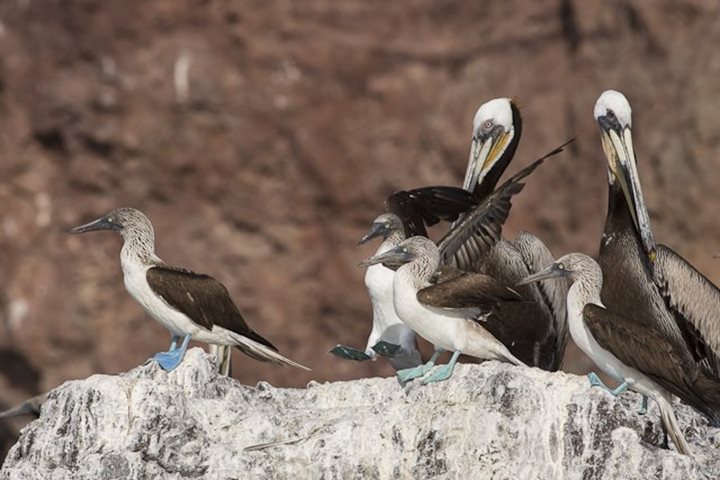Today we explored part of the peninsula of Baja California. Much of our experience in this region is focused on islands. While their isolation and limitations make for unique conditions, the diversity of the mainland is equally interesting.
Above our dock at Puerto Escondito lies Steinbeck Canyon, a deep cleft in the Sierra de la Giganta. Many of us walked up this canyon. It was cool in the shady depths, and in this dry country, the gurgle of running water was a rich and unusual sound. Figs, with their pale snaky roots, clung to the cliff walls, and the boney trunks of palo blanco stood on gentler slopes. We clambered over boulders and strolled the curving scoured bottom of the canyon. At last some real rock-climbing challenged those who dared the exposure.
Meanwhile, others traveled to San Javier. A new road winds through impressive scenery as it climbs though Baja California’s coastal mountains. Again, running water was a surprise in the desert, and attracted ducks and egrets to an unlikely setting. The church in San Javier is ancient. It solid and simple style suggests its place in history—the oldest unrenovated Californian mission. Lush vegetation surrounds the town, including date palms and a gnarled olive tree centuries old. Birds flitted about the fruit trees. We saw orioles, Vermillion flycatchers, and lemon-colored kingbirds. But best of all were the Xantus’ hummingbirds, found only in Baja California. They danced among the flowers, whizzed overhead, and sparred with each other in brief but intense aerial combat.
A grander cathedral stands in Loreto. It is the mother of all Californian missions. After a seaside lunch, we visited the cathedral. Though impressive, it was not the most popular spot in town, because expedition leader Lee promised to buy for every kid who could order in Spanish at Loreto’s renowned ice cream store! (I had pistachio.)
The Baja California peninsula is rich in cultural as well as natural history. Today we sampled much of both.







